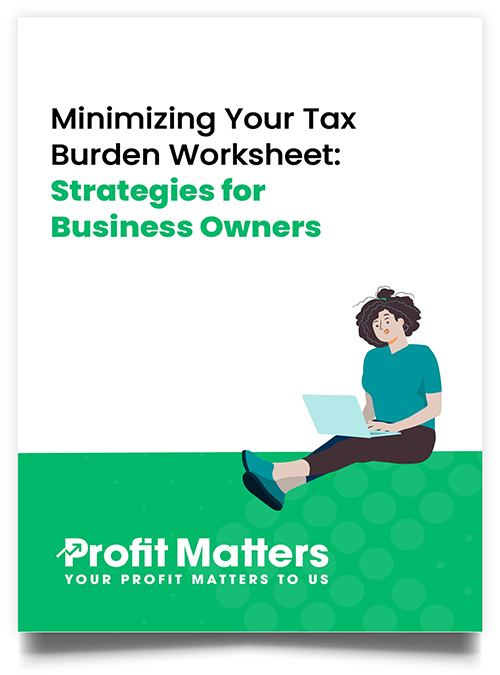By Ashley Ingle, CEO at Profit Matters.
As seen on Forbes.com
You’ve either decided you need a chief financial officer (CFO) because you are tired of not understanding the numbers, you want some high-level strategy to take the company to the next level or someone else mentioned it might be time. Either way, good for you. You are well on your way to achieving better financial results! Hiring a CFO means you’ll have a professional to help you manage by the numbers with all of the information you need to make better decisions.
What’s a CFO responsible for?
Today’s CFO does way more than “crunch numbers.” It’s likely they will oversee and advise on anything and everything that falls under the financial umbrella of the business. However, the number one failure that arises when hiring a CFO is the inability to let go and trust someone else with your organization. You can hire another person to bark orders at or you can trust you’ve hired an expert who follows a proven process resulting in success. If you hire a CFO who does not understand your objectives and goals, how on earth would they ever help you achieve them? You fail by asking your CFO to help you tackle one crisis at a time, instead of making a measurable plan of action. Start by making a plan, moving on to processes, people and performance to help jump-start your relationship.
1. Make a plan.
If you don’t have a solid plan, you’ll never achieve tangible results. A study by Dr. Gail Matthews shows that people who write down goals are more likely to achieve them. This goes for personal and business goals. Every year you should sit with your CFO and develop a plan that includes achievable goals, outlining the overall company strategy for cash and profits and end game. For example, do you want to sell the business, pass it on to children, earn as much as you can now and dump it later? Some businesses aren’t as “saleable” as others. Some big industry players can never really expect to see a high valuation or multiple compared to others. Document a one-, three-, and five-year plan. Understand your business and personal goals. What are three things that your CFO can help you achieve this year that would be huge? What are your revenue and profit goals?
Part of making a plan means you make a budget. The budget will serve as your plan for the financials throughout the year. You’ll need to make a budget for sales and operations. Creating a budget isn’t just a job for your CFO; you should be directly involved in many conversations to get to realistic, achievable, measurable targets.
2. Evaluate your processes.
Do you ever feel like the team is running around completing tasks without standardized processes, accountability or direction? How about two people who do similar tasks and roles that could be rolled up into one? Developing standard operating procedures (SOPs) for the finance department is imperative. Once you have documented all of your accounting SOPs, you’ll see how beneficial it would be to your business and all of your staff to have processes documented for each department. Your CFO should be able to help you identify all of the financial tasks, who completes them and why. A good way to achieve this without anyone thinking their job is getting changed or going away is to ask them to write a summary of what they do each month, related tasks, how much time it takes them and who they work with.
• Include a flow chart if needed.
• Share SOPs between departments.
• Review and update SOPs annually.
• Ensure SOPs are documented and followed by all.
• SOPs can be used as a guideline to hire, fire and reward.
Your CFO can help you summarize what your processes currently look like, what is the purpose, who’s involved, what happens if it doesn’t get done and who is ultimately accountable. Do you have legacy or repetitive tasks that could be eliminated? Are you missing important internal controls?
3. Analyze your people.
How often do you examine the value that each of your employees has in your organization? Understanding how much revenue each employee produces or oversees is instrumental to your success. It is possible to put both tasks and dollars to everyone on your team. You can help your CFO by starting with an organizational chart with everyone’s name. What are their titles and departments? What are the five most important tasks each of these people are responsible for?
People can affect our culture and performance positively and negatively, thus affecting our financial results. Your CFO will want to understand who is a producer and what salaries are not in line with industry standards or your competitors. Having a better grasp on your people will give you a better understanding of where you may be overstaffed. You’ll also be able to identify gaps in your team’s strengths and weaknesses.
4. Review performance, often.
One of the most important functions of the CFO is to measure a company’s success and failure. Financial performance or key performance indicators (KPIs) should be tracked monthly, compared month over month and benchmarked against industry leaders and your budget.
So what are some KPIs that your CFO should track for you?
Profitability
• Total Revenue
• Gross Profit Margin
• Operating Profit Margin
Activity
• Accounts Receivable Days
• Accounts Payable Days
Efficiency
• Return on Assets
• Return on Capital Employed
Cash Flow
• Free Cash Flow
• Net Cash Flow
• Cash on Hand
Liquidity
• Quick Ratio
• Current Ratio
Put your plan in action.
Avoid hiring a CFO to put out fires all of the time and hire someone who can help you achieve measurable results. Your CFO relationship should start with creating a plan, perfecting your process, evaluating your people and monitoring your performance. It is possible to manage by the numbers when you have all of the information you need to make better decisions.



